Best For | Best for professionals seeking diverse, accredited online courses from top universities. | Best for tech career skills training with hands-on, industry-focused nanodegrees. |
Price | In the range of $30-$100 per course | Starts at $249/month |
Features | Diverse university courses. | Tech skill focus. |
Pros | Wide range of topics. | Industry-relevant curriculum. |
Cons | Limited hands-on practice. | Higher cost overall. |
The coursework from Coursera vs Udacity looks good on resumes, and both are serious forms of online education.
The two platforms are extremely popular among individuals interested in learning new skills or improving their existing abilities.
However, there are some key differences between them. Today’s post will answer any questions you may have about Coursera and Udacity.
The first thing I can tell you is that while Coursera has a broad range of learning topics, Udacity focuses mostly on technology.
Further, Udacity mainly offers individual courses, while Coursera offers degree programs, specialization courses, and individual courses.
Coursera vs Udacity: The Main Key Differences
Coursera and Udacity differ in the following ways:
- Udacity offers more vocational training programs, while Coursera provides more university-style lectures.
- While Coursera offers more affordable learning programs, Udacity is more expensive.
- Programmers create courses on Udacity, while universities create Coursera.
- Udacity offers fewer classes, while Coursera has a larger selection of classes.
Coursera vs Udacity: Quick Overview
I’ll start by comparing Udacity and Coursera. Here’s a quick rundown of who they are, what they have to offer, and what distinguishes them from the competition.
What Is Coursera?
In order to provide students with high-quality courses, Coursera collaborates with universities that are known for providing popular and reputable courses.
This platform offers both specialization and individual courses. Lectures are divided into two main categories: those designed to help enrolled students improve specific skills and those intended for general education.
In addition, users will be able to view accredited degree programs. Coursera is a great option if you are looking for free or inexpensive educational resources.

As a bonus, Coursera offers financial aid in some cases if you enroll in an expensive class. Coursera excels at online learning. The courses are available on demand, self-paced, or timed.
A typical individual course is 4-12 weeks long, whereas specializations require a longer commitment, usually several months.
The platform’s courses can be audited for free, but a completion certificate is charged. Coursera requires students to pay a tax to access learning materials such as quizzes and class projects.
Peer assessments are one of my favorite things about this e-Learning website, which makes it stand out from its competitors. Your work is evaluated by other students in the same class as you.
What Is Udacity?
It is generally a decent course selection on Udacity, but it is focused on certain areas, such as computer science and programming.
Despite the fact that there are a number of free courses available, students must usually pay a fee if they wish to obtain verified certificates. Courses that are paid for have more benefits. Tutor feedback and coaching are a few of them.

Certain programs were created in partnership with universities and other traditional higher education academic institutions, while platform programmers created others.
Nanodegrees are what we call them. Compared to Coursera, Udacity offers more expensive paid courses.
The free program may offer you a sense of self-paced learning, but it lacks the advantageous sense of community.
Compared to Coursera, Udacity focuses more on skill-based learning.
Coursera vs Udacity: How Much Does It Cost?
The first thing that pops up in everyone’s mind before choosing something is its price. So, below, let’s have a look at the pricing of both platforms to find out which one is best for you.
Coursera Pricing Plans:
Here, you’ll find many free courses as well as paid ones, especially for those who want to earn a verified certificate at the end.
Certificates can cost up to $100. But Coursera costs aren’t readily visible. Users must enroll first, which is a huge drawback, in my opinion.
There are also specializations on Coursera (groups of more in-depth classes). A monthly fee of $40 to $80 is required to join this type of club. Further, these are the types of eLearning programs that last the longest.
Coursera offers online degree programs that include university-recognized degrees, but they are the most expensive. Depending on the course, costs range from around $15,000 to $25,000.
Udacity Pricing Plans:
Nanodegrees (online degrees) are Udacity’s most popular program. One of these programs requires five or six courses, and it takes between six and twelve months to complete.
When Nanodegrees was first launched, its price was $199 per month. However, it has increased significantly, now reaching $499 per month.
Furthermore, these programs offer many benefits. They provide feedback, work reviews, and certificates. Some of these courses also provide additional benefits, such as tuition reimbursement and job guarantees.
In contrast, Udacity’s Nanodegrees are significantly more expensive than Coursera’s specializations, which are offered for only $40.
However, both e-learning platforms share many similarities in terms of depth, complexity, and course content, and both are excellent values.
Coursera vs Udacity: What Subjects You’ll Find?
It’s now high time to know about the subjects and topics an individual will find on these platforms.
Coursera

The subjects covered by the courses are broader. Course structures are more similar to those of traditional lectures at universities and colleges.
Professors and specialists from academic institutions create all Coursera courses, so this is probably the reason for this.
Coursera covers the following topics:
- Business courses;
- Arts and humanities;
- Health;
- Computer science;
- Personal development;
- Math and logic;
- Social sciences;
- Information technology;
- Data science;
- Physical science and engineering.
- Language learning;
Coursera offers a wide variety of topics, as you can see.
Udacity
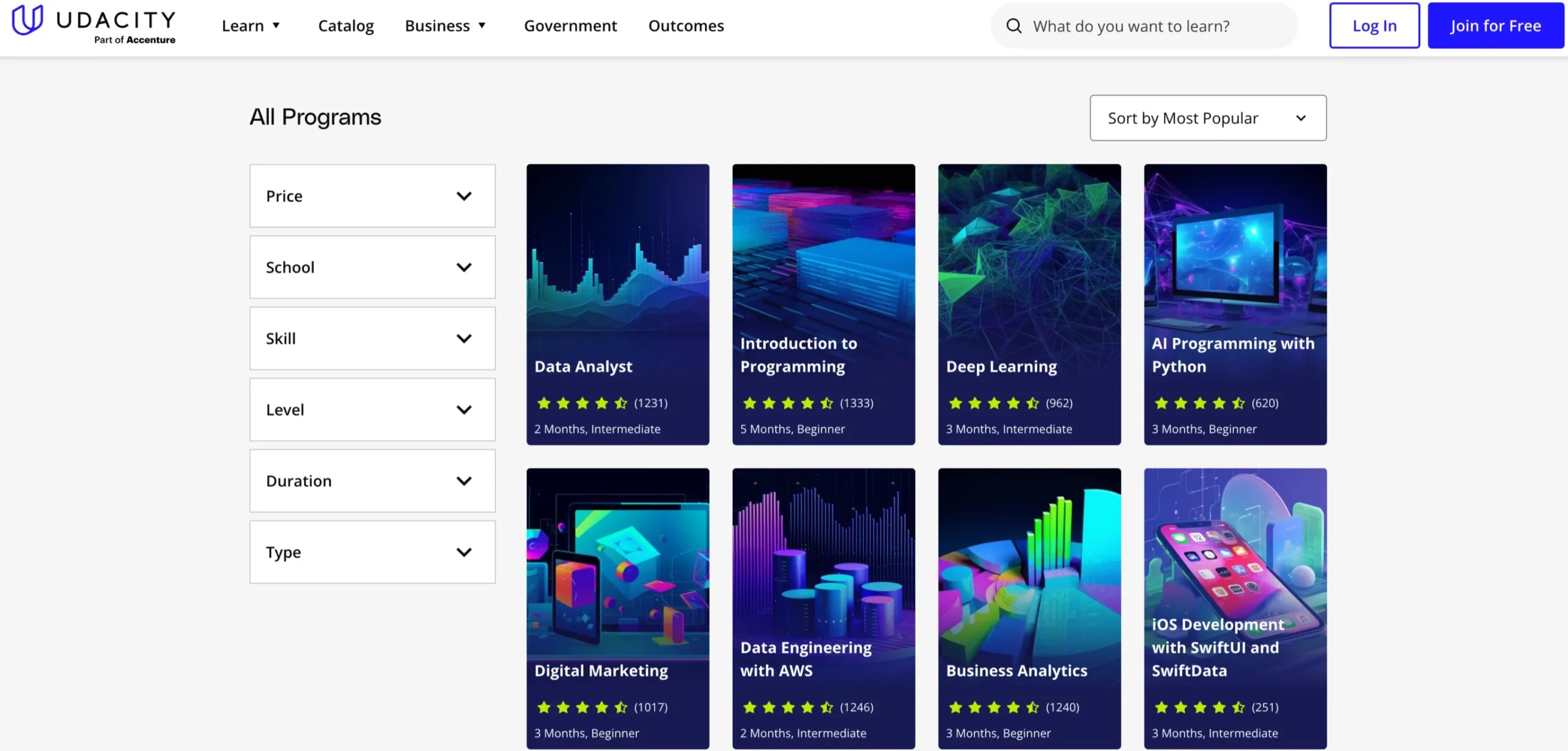
Coursera focuses mainly on academic subjects, while Udacity focuses more on tech. Popular courses include:
- Programming and development;
- Artificial intelligence;
- Cloud computing;
- Autonomous systems;
- Business;
- Data science.
Coursera vs Udacity: The Tutors
In both MOOC platforms, the tutors are seasoned professionals or experts with impressive credentials.
Rather than choosing tutors based on their work experience, Coursera chooses tutors based on their academic credentials. Some of Coursera’s instructors hold tenured university professor positions.
YouTube, Amazon, Google, and Facebook are just a few of Udacity’s instructors. A course tutor could be the CEO of an international company or an IBM computer engineer.
Thus, both MOOCs do an excellent job of showcasing their tutors openly and honestly. Students are offered high-quality information only by experts who are well-qualified.
Coursera vs Udacity: Comparison of Courses
Some of you may want to explore some of the more specific education programs on Coursera and Udacity a little more since we previously discussed some general categories of courses.
Coursera:
- Neural networks with convolutions;
- Welfare and behavior of animals;
- De-mystifying mindfulness;
- Beginners’ guide to Chinese;
- International criminal law – introduction;
- Bitcoin and cryptocurrency technologies;
- Python data science – introduction, etc.
Udacity:
- Programming foundations with Python;
- Introduction to virtual reality;
- Introduction to cybersecurity;
- Java programming basics;
- Intro to computer science;
- Networking for web developers;
- Machine learning – unsupervised learning, etc.
Coursera vs Udacity: Features Comparison
So, before you join up for a class, compare Coursera vs Udacity to see who comes out on top.
1. Certification
Coursera is a university, and Udacity is a trade school.
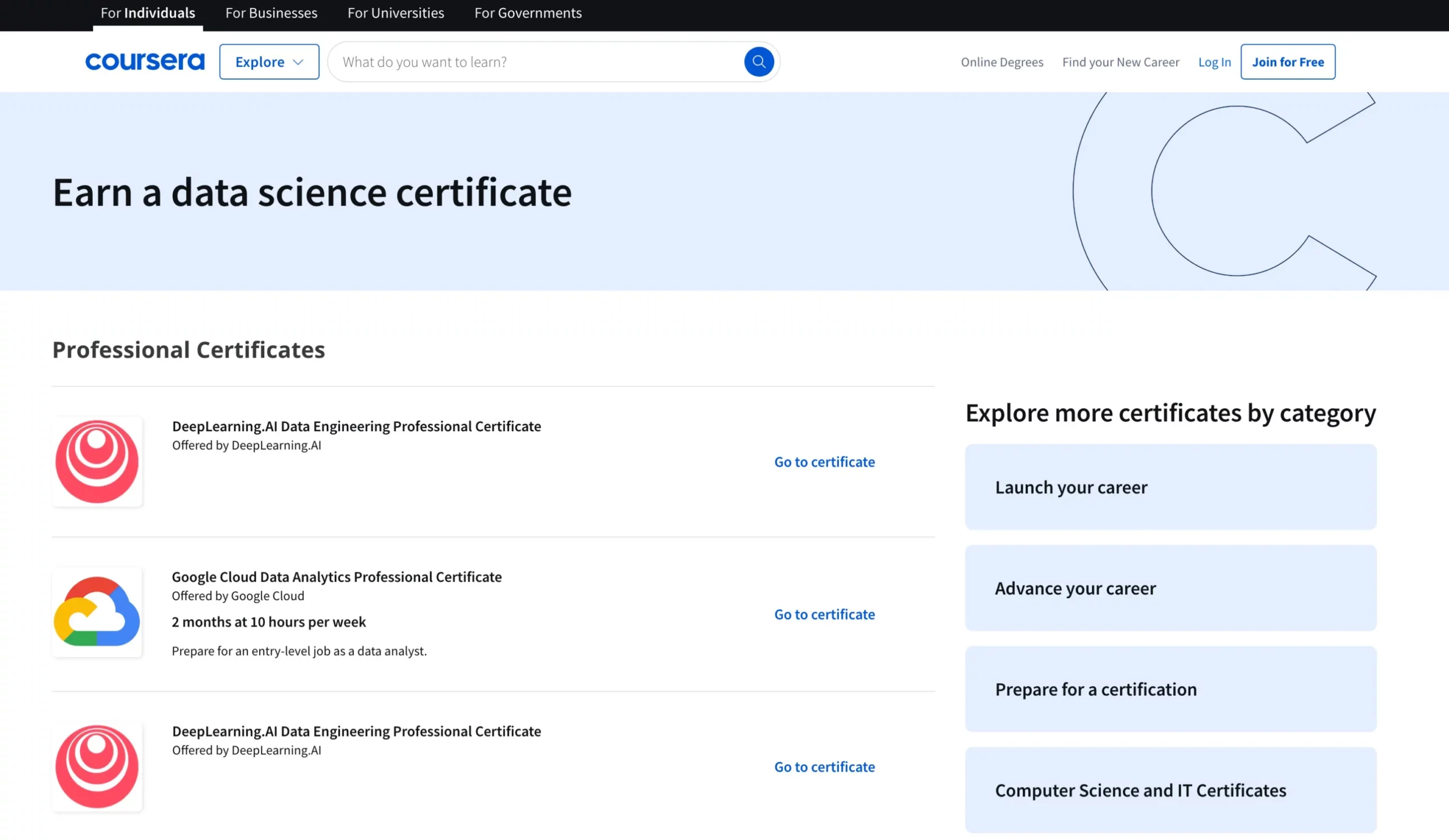
The Udacity catalog offers a few hundred highly specialized courses, whereas Coursera covers most of what a university would offer. It simply depends on what your goals are.
This isn’t necessarily a bad thing. Many of these courses are recognized by leading tech companies in Silicon Valley and other parts of the country.
Udacity is a great choice if you’re interested in developing your skills in AI programming, C++, or web development.
Experts in industry and education develop the courses, which are taught using videos, projects, and mentoring. A Nanodegree or certification can be earned within a few weeks.
However, if you want something a little more – like a university degree – then check out Coursera.
Stanford, Johns Hopkins, and Duke are among the universities that have created many of the 3,000+ courses. They are similar to the classes offered at universities.
In addition to videos, quizzes, discussion boards, peer-graded assignments, and weekly exercises, students are also expected to complete a final project or exam.
By taking these classes from the comfort of your home, you can earn a bachelor’s or master’s degree.
Winner: This is a clear winner, as it depends on what you hope to gain from your education. Courses on Udacity are often targeted at developing or advancing a skill (as long as the subject is covered). But if you want a comprehensive education, choose Coursera.
2. Pace of Learning
Udacity Offers Self-Paced Courses.
The convenience of online courses is undeniable. Lectures can be viewed when it suits you, coursework can be done when you prefer, and tests can be taken whenever you like. There is flexibility with both of these platforms.
If you choose Udacity, you can take subscription courses or choose a term-based Nanodegree program.
Term-based programs, on the other hand, have hard deadlines for each project, while subscription courses are self-paced. Having little time to devote to studies could be a problem.
The majority of Coursera’s assignments have no hard deadlines. The platform suggests deadlines to help you pace your work, but if you miss one, there are no grade penalties.
Your deadlines can always be reset if you are running late. As for degree programs, they have hard deadlines, just like any university.
Winner: We’re going to go ahead and call this category won by Coursera since most of its thousands of programs allow you to take as long as you need to complete your assignments.
3. Support
Do You Want a Personal Touch? Udacity Offers More Support
Taking an online course has the major drawback of not having a professor who can help you when you run into problems. These problems are handled differently by different MOOC platforms.
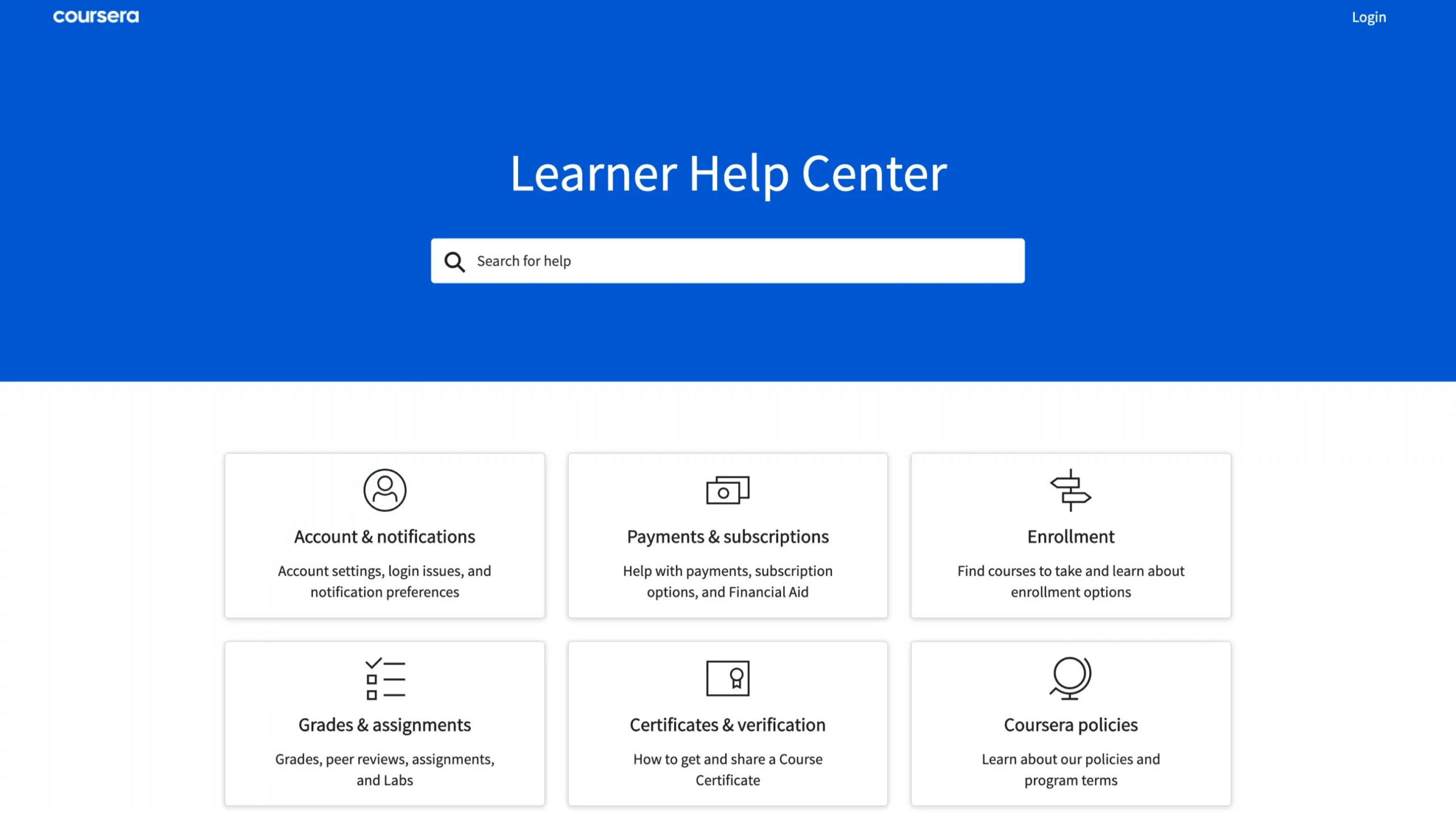
On Coursera, help is available from other students, peers, and teachers. The group allows you to get in touch with others who may know more about this topic than you do.
Although this can be helpful, it’s not as useful as being able to connect directly with an educator. Some professors may provide supplementary videos to answer students’ questions, depending on the course.
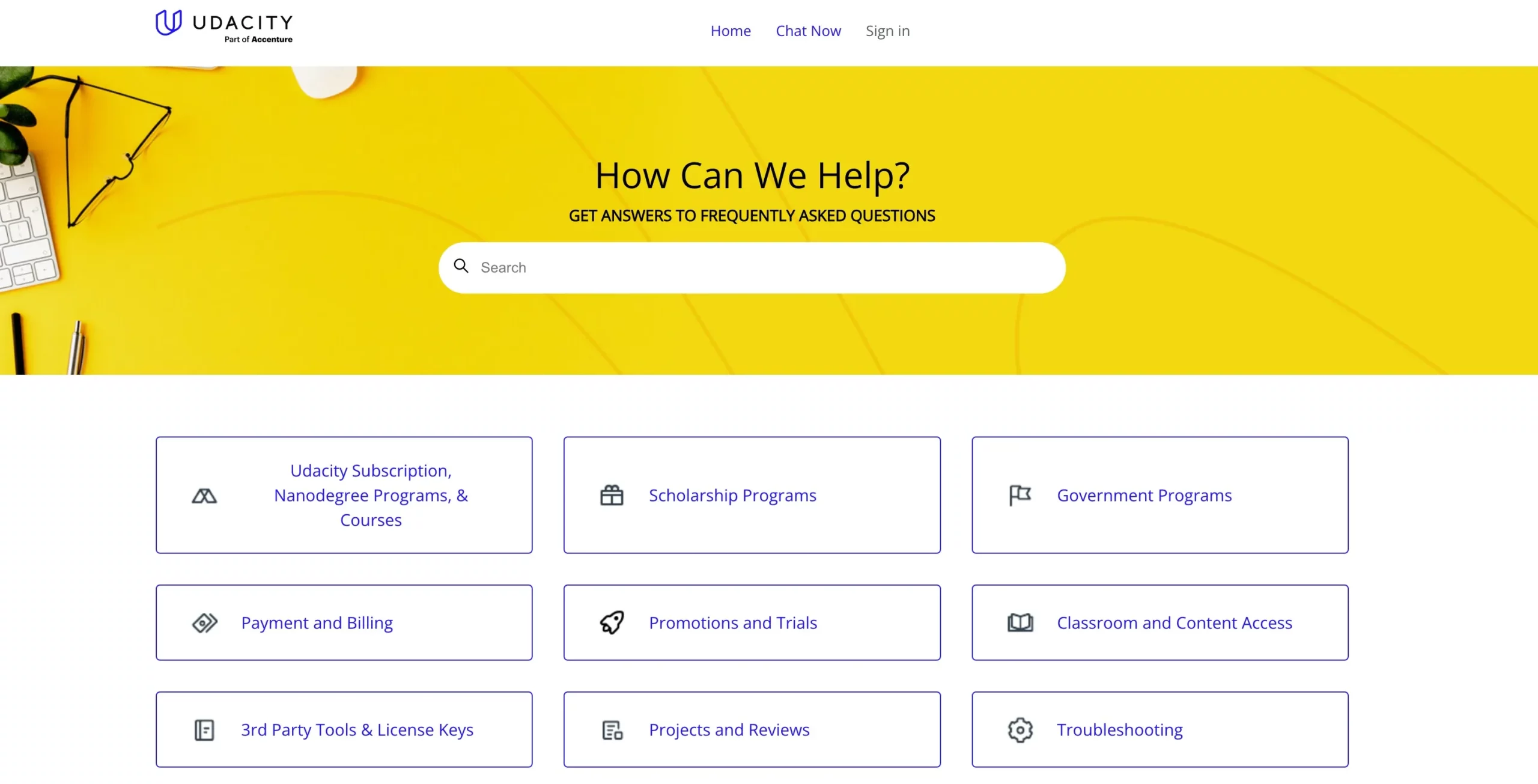
Direct one-on-one support is a big plus with Udacity. As a student, you’ll get tailored weekly learning plans, one-on-one chats, progress tracking, and advice from technical mentors.
Additionally, students and graduates can access free career coaching services via the platform. When you study coding, you can even get feedback from developers to make sure everything is done correctly.
Winner: Udacity. Personalized support is very limited at Coursera. Udacity offers mentorships and career coaching from beginning to end.
4. Free Courses
Coursera’s Free Courses Offer More, but Udacity’s offers more. Both Udacity and Coursera offer a wide range of free courses. If you don’t pay, either option will limit you.
The courses on Coursera are free, and you can take nearly 900 of them. Although sometimes peer-reviewed assignments and quizzes are offered in some courses, you do not receive graded assignments.
You will not receive a certificate upon completion. While you may learn something, you will gain little.
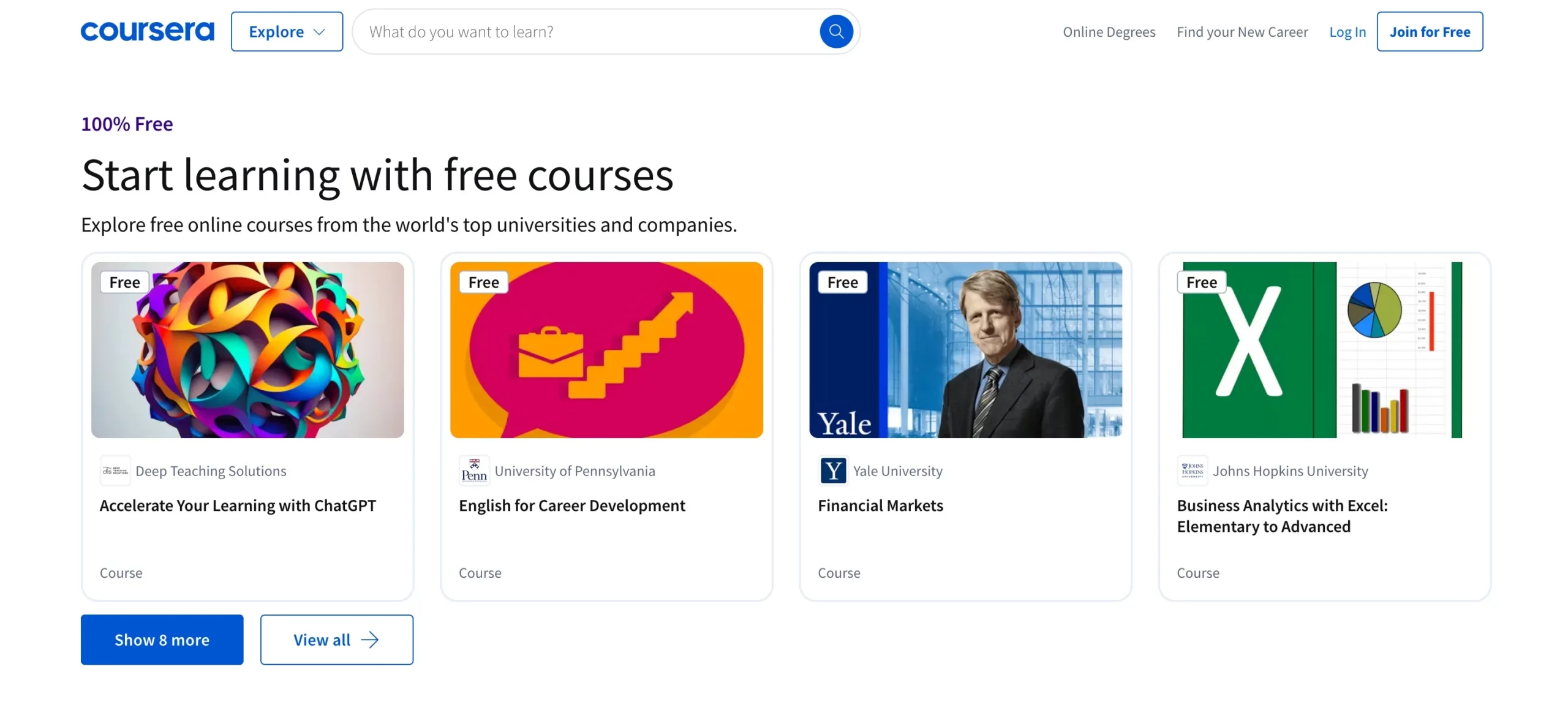
The number of free courses offered by Udacity is much lower – around 200. With these courses, however, you’ll have access to more.

In summary, you will not be able to get a certificate for completing these courses, but you will be able to take interactive quizzes, complete assignments, and – depending on the course – maybe even submit a final project.
You will improve your understanding of the material as well as be motivated to achieve the best grade possible.
Winner: Overall, both Udacity and Coursera offer a wide variety of free courses.
Coursera vs Udacity: Pros & Cons
Coursera
Pros
- Course materials boast top-tier quality and are expertly crafted.
- Prestigious professors from Stanford and Princeton teach courses.
- Multiple languages, like English and Spanish, enhance accessibility.
- Certificates cost less, ranging from $50 to $60 only.
- Over 1,000 courses span engineering, arts, and sciences.
Cons
- Fixed schedules limit flexibility for some courses.
- Pricing is unclear until registration and enrollment begin.
Udacity
Pros
- Nanodegrees offer specialized, career-focused learning paths.
- Self-paced courses allow flexible, deadline-free study.
- Industry experts deliver practical, high-quality instruction.
- Detailed feedback on projects improves coding skills.
- Job placement support is included with many programs.
Cons
- Nanodegrees are pricey.
- Limited subjects, mostly tech-focused, exclude other fields.
Coursera vs Udacity: User Reviews

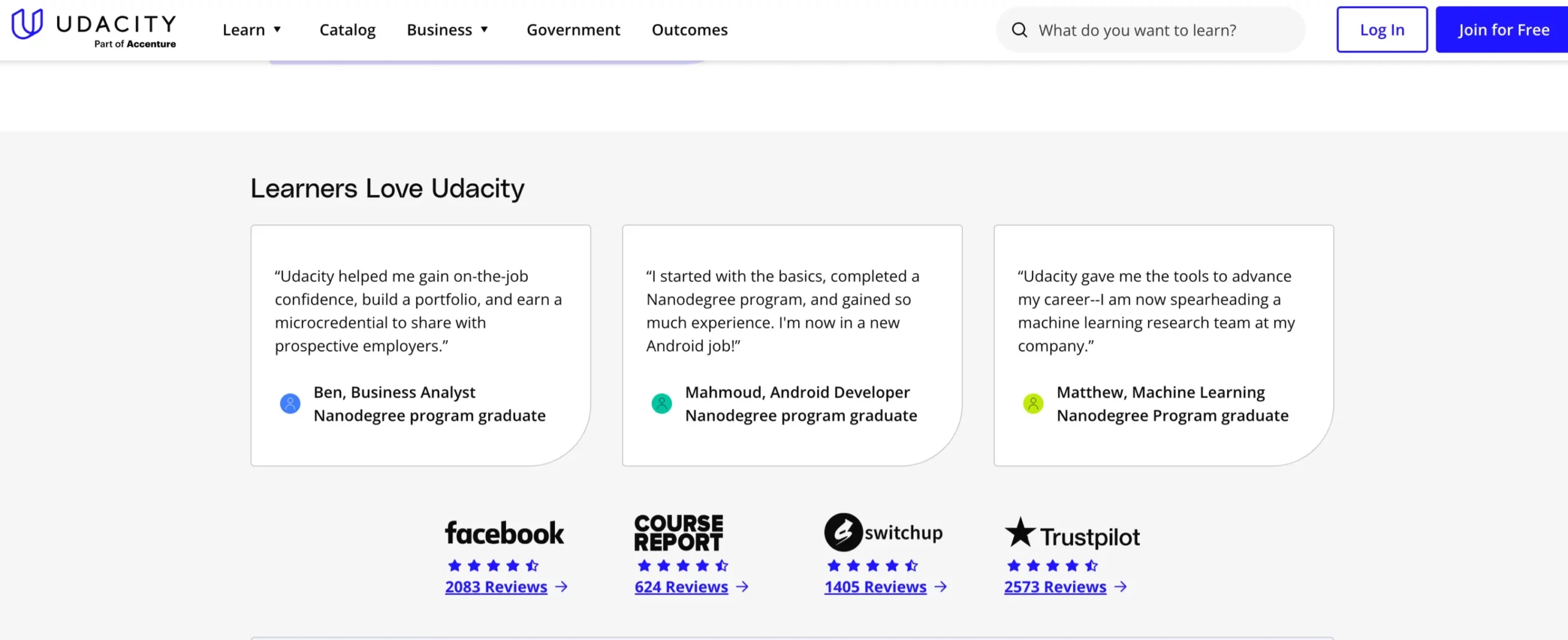
Quick links:
- BestMyTest Review: Best TOEFL Preparation Courses?
- Top Best NLP Training Courses & Certifications
- Free Online GED Classes: Classes, Online Practice Test, Study Guides
- GMAT Score Chart: Ace Your GMAT Score Now!
- How Hard Is The LSAT Exam: The Truth About LSATs Difficulty!
- Experfy Review: Can You Really Trust Their Courses?
- Educative Review: Best Online Learning Platform For Software Developers?
Conclusion: Coursera vs Udacity 2025
How do you rate Udacity versus Coursera? With either of them, all you need is an active internet connection and a computer or laptop to complete a course and improve your skills.
Most courses offer flexibility and freedom, so students can learn at their own pace and easily incorporate them into their daily schedules.
In terms of value, Coursera might be better than Udacity when comparing content quality. Coursera’s course catalog is larger and more affordable than Udacity’s.
However, if you are seeking a professional credential, the Udacity robotics nano degree program will be more appealing.


